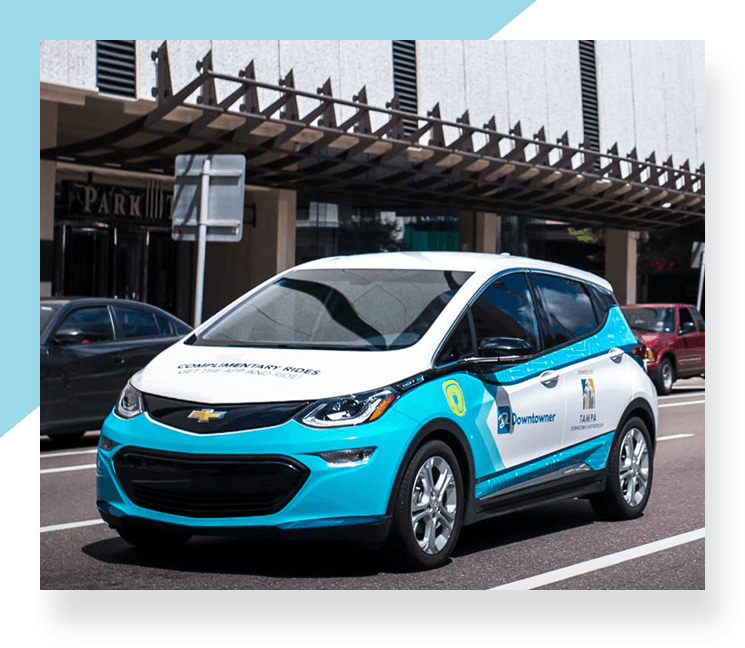
Project Manager: Gabe Matthews (Florida Department of Transportation)
Transit services in the nation are experiencing innovations. Downtowner service in Tampa, Florida, is one such innovation that provides ride-hailing services for local residents free of charge. Downtowner service is the first ridesharing service in the state of Florida, one of the very few in the nation. Downtowner aims to fill the existing mobility gap of the transit system, ease the parking needs, and revitalize the local economy. Its services have been expanding over the last few years and have been accepting more than 500 riders a day. Downtowner in Tampa is attracting national attention as some other cities, including some in the state of Florida, would like to follow suit.
However, a quick literature search suggests there is no study that evaluates the ridesharing services, particularly for Tampa’s Downtowner service. There is a lack of quantified evidence to determine whether the service has been achieving its goals and whether the service is cost-effective. This research project aims to develop an evaluation approach, for the first time, to assess the effectiveness and cost-efficiency of the Tampa Downtowner service. Such analysis is important to help Florida DOT, MPOs and local municipalities to better understand the effectiveness and issues surrounding the Downtowner services and provide guidance to other cities and states which aim to develop similar systems.
This research intends to answer the following questions:
(1) Is the Downtowner service effective to achieve the goals of its original intents, specifically,
- Did and to what extent the Downtowner service enhance mobility of local residents?
- Did and to what extent the Downtowner service ease parking demand?
- How satisfied of Downtowner riders with the services?
- How satisfied of local businesses and government agencies with the services?
(2) Is the current funding mechanism and the Private-Public Partnership model sustainable? Is there other model that is more cost-efficient and sustainable?